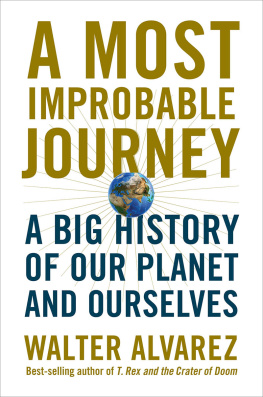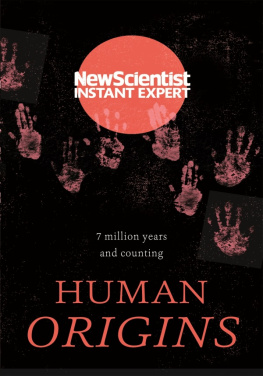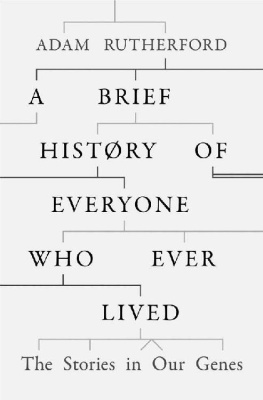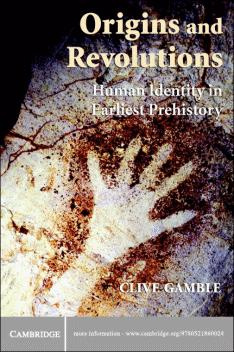
For Lynn
Contents
Anyone walking along the sidewalk of a large city cant help but be struck by the incredible variety of human beings tall and short, fat and lean, hairy and hairless. Some have skin the color of heavy cream; others are as dark as bittersweet chocolate. The shapes of peoples faces, the colors of hair and eyes, the contours of eyes, noses, and lips are marvelously unique. Partly were attuned to these differences because we use them to identify people we know. But our diversity is not an illusion. Human beings really are one of the most physically varied species on earth.
People tend to use these different appearances to draw conclusions about the ancestry of others. In the Americas and Europe, if you have dark skin, people assume that you have African ancestors, though dark-skinned peoples also come from southern India, Australia, and parts of southeastern Asia. Individuals whose eyelids have an extra fold of skin are assumed to be from Asian families, though not all Asians have an epicanthic fold, as it is called, and non-Asians scattered from southern Africa to the Americas do. A prominent nose, deep-set eyes, and light skin identify a person as having European ancestors, though people with similar features, if slightly darker skin, have lived for thousands of years in India, Polynesia, northern Japan, and North and South America.
Our propensity to sort people into categories has, over the course of history, contributed to immense human suffering. Entire groups have been condemned to slaughter or slavery because of the color of their skin or the shape of their eyes. Even today, almost all the armed conflicts separated by differences that often are interpreted in biological terms. In places like Rwanda, the Balkans, Indonesia, and the Middle East to take only the most recent examples groups of people have fought and killed each other with an almost tribal savagery.
Elsewhere, tension between physically distinguishable groups often lurks just beneath the surface of our everyday lives. In the United States, more than three-quarters of African Americans and European Americans alike judge relations between the two groups to be only fair or poor. At the dawn of a new century, the issue of race looms larger than ever.
Groups of people vary in appearance because their ancestors had different biological histories. But just how different were those histories? What if the distinctive appearances of human groups are a historical accident, a biological joke, no more substantial than masks at a costume party?
The story that Im going to tell in this book begins in Africa, somewhere in the high grasslands and wooded slopes of present-day Ethiopia, Kenya, and Tanzania. More than 100,000 years ago, a small group of humans lived in this region. They gathered nuts, fruits, and seeds from the countryside. They hunted gazelles and hares and scavenged meals from the carcasses of animals killed by other predators. They looked much like people today, with high foreheads, sharp chins, and light, graceful bodies.
Many other humans lived elsewhere in Africa, Europe, and Asia at that time, but they were noticeably different from us. Their forehead slanted backward toward a low, bunched skull, and a heavy visorlike ridge protruded from just above the eyes. These people would never have passed what anthropologists call the subway test that is, if you gave them a shave, dressed them in modern clothes, and seated them on a subway car, they could never hope to blend in. The other passengers would inevitably look at them and say, Thats a mighty strange-looking human being.
while the population of modern humans may have dropped as low as a few tens of thousands at times.
Today all the archaic humans are gone. The last one died many thousands of years ago. Though they successfully occupied the earth for hundreds of thousands of years, they were an evolutionary dead end.
Every single one of the 6 billion people on the planet today is descended from the small group of anatomically modern humans who once lived in eastern Africa. The group occasionally came close to extinction, but it never died out completely, and eventually it began to expand. By about 100,000 years ago, modern humans had moved north along the Nile Valley and across the Sinai Peninsula into the Middle East. More than 60,000 years ago they made their way along the coastlines of India and southeastern Asia and sailed to Australia. About 40,000 years ago, modern humans moved from northeastern Africa into Europe and from southeastern Asia into eastern Asia. Finally, sometime more than 10,000 years ago, they made their way along a wide plain joining Siberia and Alaska and spread down the length of North and South America.
Wherever modern humans encountered their archaic counterparts in Africa, Asia, and Europe, the old-style humans eventually disappeared. Many questions surround these encounters. According to the available evidence, the two groups interbred very little, if at all. This conclusion seems totally at odds with our knowledge of human history, which shows that groups of people have eagerly interbred at almost every opportunity. Perhaps modern and archaic humans were so different genetically that they were not able to produce offspring. Or maybe they did have children, but hybrids were not accepted into bands of modern humans, so the archaics physical characteristics could not enter modern populations. We just dont know.
How modern humans replaced their predecessors is also a mystery. Archaeological evidence indicates that in some places bands of modern and archaic humans lived near each other for thousands of years. Yet no signs of warfare have been found. The cave paintings of Europe,were dying out on the continent, show plenty of violence against animals but none against other humans.
Until a few years ago, much of what Ive written in the last few paragraphs was not known. Before then, the only way to learn about our ancient ancestors was through the scattered bones and stone tools they left behind. Such evidence is maddeningly scarce: of the several billion modern humans who lived before the invention of agriculture, scientists have found the fossilized remains of perhaps a few hundred. And the scarceness of the evidence means that each fragment of bone and chipped rock bears a heavy burden of speculation.
But bones and stones are not the only record of our past. Each of us carries around another record in almost every cell of our bodies. Human DNA, the long, complex molecule that transmits genetic information from one generation to the next, bears the indelible imprint of human history. Our DNA records the evolution of an African ape that began walking on two legs more than 4 million years ago. It documents the emergence of modern humans on the savannas of eastern Africa about 7,500 generations ago. It chronicles the diversification of modern humans into the races and ethnic groups that we recognize today.
Geneticists are just beginning to read the story written in our DNA, but already they have discovered a saga of immense grandeur. They now can trace the movement of modern humans out of Africa into the rest of the world. They are beginning to piece together when and how groups of people acquired their distinctive physical appearances and what those appearances mean. They are learning how groups mixed and diverged over time. They are discovering the immense gulf that separates what actually happened in the past from the stories we tell ourselves about the past.
This is a book about history, but it is a history with a very real presence in our everyday lives. Most of us think of ourselves as Hispanic or Chinese, white or black, Nigerian or Norwegian, or some combination of categories. For some people these labels mean very little, while for others they are the single most important aspect of their identity. But no matter what importance individuals attribute to these labels, there is no denying their continued power in modern societies. Many people continue to think that human groups have fundamental biological differences. They believe that outward variations in skin color, facial features, or body shape reflect much more consequential differences of character, temperament, or intelligence. Even when two groups are physically indistinguishable, people tend to cite genetics as the source of group differences. They say that the aggressiveness or religiosity or inventiveness of a group could not possibly be learned it must be something in the genes.
Next page










